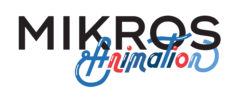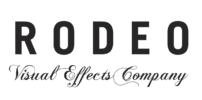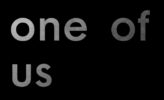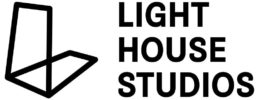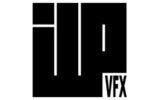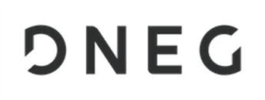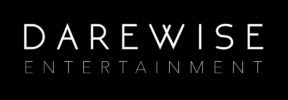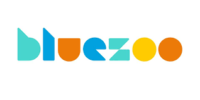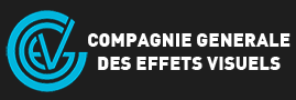Your path at ARTFX, from the baccalaureate to the studio doors
ARTFX has developed an original teaching methodology, which excludes competition and fosters cooperation between students. Team spirit is a necessary quality to participate in making a film or a video game, as well as technical excellence and creativity. At ARTFX, we do everything to encourage this, from the size of the classes (max. 25 students) to the end-of-studies projects carried out in teams and the rigorous selection of candidates, who are judged on their competencies as much as on their interpersonal skills.
Complete
artistic training
ARTFX courses combine traditional art disciplines (drawing, sculpture, photography, etc.) with learning the most advanced technologies (software and filming equipment). After graduation, students are excellent technicians and have acute artistic awareness, good knowledge of the entire film- or game-making process, from production to distribution.
Prepare yourself
for the professions of tomorrow...
And the day after tomorrow
ARTFX is intended to be both a school and an R&D centre for cinema.Some of the professions you will practice when you leave the school don’t yet exist!
In the professional realm, which constantly evolves in line with technological innovations, it’s not enough to master current working techniques and tools, software or shooting equipment. ARTFX provides you with a solid foundation of theoretical and practical knowledge, develops your independence and encourages curiosity. In this way, you will have all cards in your hand to continue to develop throughout your career and move swiftly towards supervisory positions. Or branch out in ways that you hadn’t imagined: the advertising, training, and automotive industries are increasingly interested in animation and special effects skills, particularly for creating immersive virtual or augmented reality experiences...
Synergy and
complementarity between
the ARTFX courses.
The school gradually opened up to the professions of video games, image programming (VFX and video games) and 2D animation before opening a course focusing on new cinema technologies in 2021. This diversification highlights the interconnectedness between these different sectors, requiring complementary skills and relying on common technologies. For example, the real-time engines used in video games are now being used during shooting to preview special effects. In the same way, the 2D animation industry is taking advantage of the technological advances made by 3D animation software, reducing the amount of labour required to make a 2D animation film... which contributes to the relocation of productions to France! Simply put, the students of the various ARTFX courses have a common core in years 1 and 2, but it is not uncommon for them to collaborate on projects together... and to meet again during their careers!
About5 years to grow
your professional
project.
ARTFX offers 5-year post-baccalaureate courses leading to a professional title at Bac +5 level.
A 5-year programme enables students to understand the entire production chain of a film/video game, discover and experiment with all the professions – often very complementary – for which the school trains, and acquire the necessary skills to manage a team.
The 1st year, common to all the courses, allows students to refine their orientation by experimenting with all the specialities while solidifying their artistic technique, particularly in drawing.
Year 1
THE BASICS
This system allows students to simultaneously acquire a common base and experiment, discover, and practice the different stages of making a film or a game. The strength of this pedagogical choice is that through experience, the student will better understand the production chain, learn to collaborate with colleagues, and discover the professions.
During their enrolment, ARTFX asks the candidate to state their preferred orientation.
This is used to assess your level with respect to the desired industry.
For example, to go into 2D animation, the drawing level required will be higher than for 3D animation, special effects or cinema.
This preferred orientation may be modified at the end of the 1st year and is subject to validation by the end-of-year jury.
→ Workshops to discover the professions: directing, 3D modelling, matte painting, programming, storyboard, 2D animation, character design, video games
→ Collaborative and individual projects
→ English
Year 2
ORIENTATION
In the 2nd year, the goal is to perfect your drawing skills, continue developing your general knowledge, and improve your work maturity, organisation, and autonomy.
Students continue to experiment with teamwork and practice the different filmmaking and game development steps to understand them properly.
→ Concept art, character design, anatomy, figure drawing, sculpture
→ Screenplay, storyboard, storytelling, image grammar, photography, film culture
→ Professional workshops according to orientation: directing, 3D computer graphics, 3D animation, rigging, layout, green screen shooting, compositing, real-time, visual effects, image and sound editing/2D animation, puppet rigging/prototyping, modelling, lighting, texturing, real-time
→ Making a short film or video game
Year 3
SPECIALISATION
In the 3rd year, students refine their professional projects by choosing a field of specialisation.
Several choices are possible according to the different courses offered.
At ARTFX, the more the years go by, the more the student defines their professional project.
They are both a generalist and an expert in a field.
That is what the studios appreciate in our students’ profiles.
Year 4
PERFECTING
In the 4th year, the student sharpens a set of skills related to a profession.
They become experts.
They produce a professional demo tape for their internship, which is planned during the summer.
The 4th year also marks the beginning of the development of the end-of-studies project, where collaborative work will take on its full meaning.
Year 5
The 5th year is dedicated to the completion of the end-of-studies project.
This project is carried out as a team.
Students continue to develop their professional skills and put them to use in a project.
Internships
During their courses, the students must complete an internship for a minimum duration of 6 weeks, in France or abroad.
Since the school year at ARTFX ends around June and starts in September, these internships are carried out during the summer, when the student feels ready, often between the 3rd and 4th years.
The school forwards the internship offers it receives to the students and makes its network of partner companies and alumni available.
ARTFX does not offer alternating training.
Projects related to cultural institutions and festivals
During their program, students have the opportunity to take part in projects carried out in collaboration with local cultural organizations—what we call Projets Labo (Lab Projects).
ARTFX Montpellier students participate each year in the Montpellier video-mapping festival Cœur de Ville en Lumières, while the Game Design department has collaborated several times with the Opéra Orchestre National Montpellier. They can also get involved with festivals such as Clermont-Ferrand, Séries Mania, Centre des Arts. Great opportunities to put their skills into practice through meaningful, high-profile artistic projects.
ARTFX trains for key professions in terms of employment.
The creative industries are growing fast, and the demand from studios today is greater than the number of students trained each year.
Do you have talent; do you have the desire?
You will have work!
The 3 pillars of
ARTFX teaching
methodology
Learn at your rhythm
without the pressure of grades
At ARTFX, each student progresses at their own rhythm: if they have an aptitude for certain subjects, the teacher will guide them to deepen their knowledge and make the most of their progress.
If some concepts require additional effort, skills validation can be carried out later in the year.
Therefore, the rhythm of the class can be decoupled from that of the student.
At ARTFX, no grades… But practical and theoretical competencies to be acquired.
The system of competencies allows the student to target what they need to work on, to deepen their knowledge.
Learn in
project mode
At ARTFX, we like to work on complex and/or transversal skills through team projects.
It’s an excellent way to learn new knowledge through practice and reinvest and apply the skills acquired.
Focus on practice: the
inverted classroom
ARTFX has implemented the principle of the inverted classroom: students have access to online resources created exclusively by their teachers via an internally developed platform.
They can start learning independently, at their own pace.
The time saved is reinvested to promote face-to-face time with the contributors, learning through practice, transfer of experience, individualised follow-up, and peer exchanges.
Your path at ARTFX, from high school to the studios!
Focus on ArtFX
Knowledge Base: a digital
inverted classroom
platform for students
ArtFX
This digital platform, implemented in 2020, already hosts nearly 900 videos, including 650 original videos written and produced by the school’s teachers.
Some are freely accessible, whereas others are made accessible according to the student’s progress.
Aside from the videos, the platform hosts several resources to introduce, support and enrich the courses:
PDFs, audio files, screencast tutorials, bibliographies and webographies, etc.
And, by using comments, students can converse with their teachers.
In practice, the teacher defines an “inverted classroom” time for each teaching module and includes it in the students’ timetable (for example, 10 minutes at the beginning of each workshop).
The teacher can then provide access to content tailored to each person’s level to individualise the students’ progress and push the best to go further.
In English with English and French subtitles, the videos are designed to be as educational as possible.
They can be viewed in a non-linear manner.
1 video = 1 concept (max. 10 min.); 1 theme (several concepts) = a series of videos.

The result : The student is no longer passive in front of the teacher; they become a player in their learning.
Thus, time is freed up for the teacher, who can reinvest in individual student monitoring and R&D.

